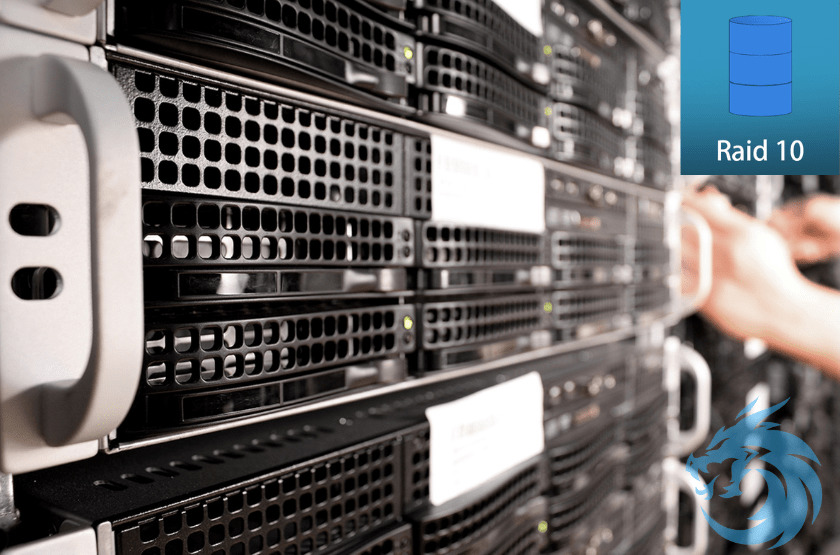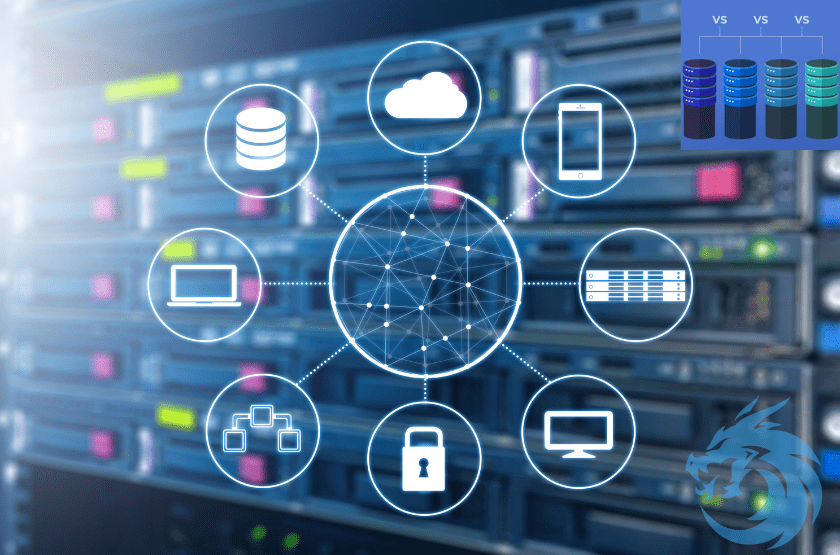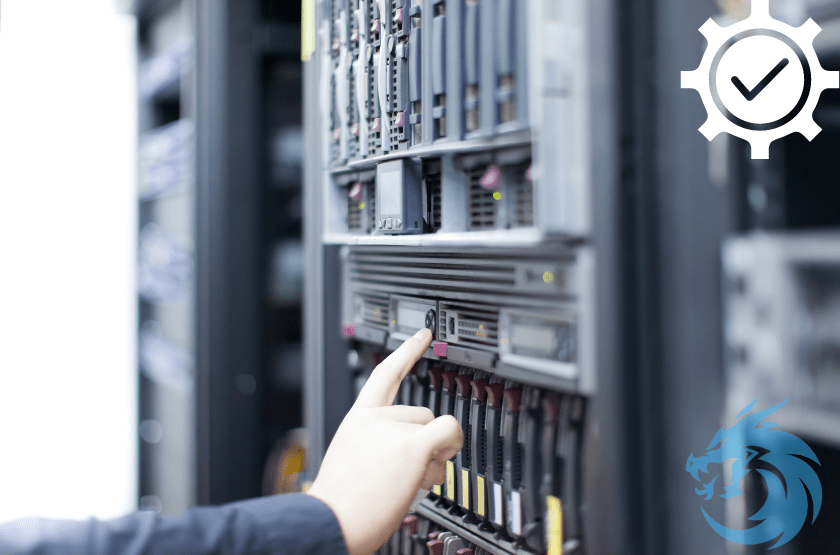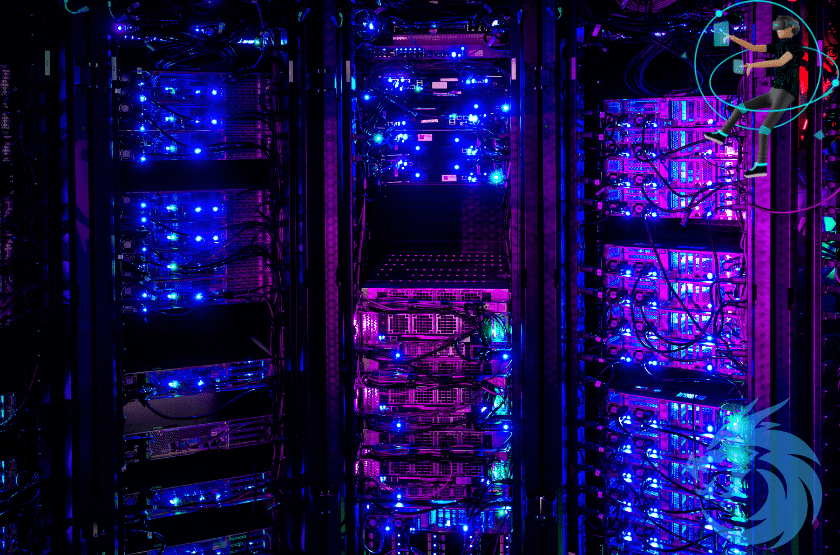The RCdragons team has spent many hours analyzing this issue so that you can compare RAID 5 vs RAID 10 in this concise guide and choose the right option for yourself.
RAID 5 Overview
RAID 5 disperses data across all disks in the array while distributing parity information. The parity facilitates data rebuilding if one disk fails.
One significant advantage of RAID 5 is its efficient capacity utilization. With only one disk storing parity, the total usable space equals the sum of all disks minus one. For instance, a 5 x 2TB disk RAID 5 array provides 8TB of storage. RAID 5 can function with any number of disks.
However, RAID 5 may exhibit poor write performance due to the overhead of updating parity across the array, potentially leading to bottlenecks, particularly in write-heavy workloads. Another drawback is the heightened risk of data loss during rebuilds, especially as drive sizes increase, resulting in longer rebuild times.
RAID 10 Overview

RAID 10 provides fault tolerance by mirroring disk pairs, wherein data is written identically to both disks in a pair. This full duplication allows continued operation if one disk per pair fails.
The mirrored pairs are then striped, distributing data across all pairs, thereby enhancing read and write speeds. RAID 10 offers exceptional performance, especially when utilizing SSDs or enterprise drives.
However, mirroring necessitates a minimum of two disks per set, requiring RAID 10 arrays to have an even disk count. Additionally, the usable capacity equals just 50% of the total disks since each copy utilizes two disks. This tradeoff between performance and redundancy comes at the expense of capacity.
Comparing Fault Tolerance

The primary difference in fault tolerance between raid5 vs raid10 lies in the number of disk failures they can withstand.
RAID 5 remains operational after one disk failure but risks complete data loss with a second disk failure.
RAID 10 can endure multiple failed disks, as long as only one disk fails per mirrored pair.
Rebuild processes also differ, with RAID 5 rebuilding data using parity from the remaining disks, while RAID 10 simply copies data from the intact mirror disk, resulting in a simpler rebuild process.
Comparing Performance

RAID 10 consistently provides faster read and write speeds compared to RAID 5, owing to striping across mirrored disk pairs. Unlike RAID 5, write speeds in RAID 10 are symmetrical to reads since writes do not require parity calculation.
Benchmarks demonstrate RAID 10’s superior performance, particularly with SSDs, making it suitable for applications requiring low latency and fast transactions, such as databases. In contrast, RAID 5 suffices for workloads focused on sequential access.
Comparing Capacity Efficiency
RAID 10’s mirroring limits usable capacity to 50% of the total disks, making it less efficient in terms of capacity utilization. In contrast, RAID 5 incurs a capacity loss equivalent to only one disk’s capacity for parity, rendering it more efficient in utilizing disk space.
Use Cases and Recommendations

RAID 10 is ideal for latency-sensitive applications and scenarios demanding rapid read/write speeds, such as databases and heavily utilized virtual machines. Despite the capacity trade-off, its performance justifies the sacrifice.
On the other hand, RAID 5 strikes a favorable balance for general-purpose storage and backup needs, offering adequate redundancy and performance at a lower cost per gigabyte.
When selecting a RAID level, it’s essential to consider application patterns and the importance of fault tolerance. While RAID 10 delivers superior redundancy, RAID 5 provides enhanced protection compared to a single disk while maximizing storage efficiency.
Regardless of the chosen RAID level, implementing a robust backup strategy remains crucial to mitigate against catastrophic failures and other scenarios beyond RAID’s preventive capabilities.
Demand in the Future

The demand for RAID 5 and RAID 10 will evolve with the changing landscape of data storage and technological advances. As the volume of data expands, the search for cost-effective yet reliable storage solutions becomes more critical. RAID 5, with its efficient space utilization and redundancy, is poised to remain preferred for its balance of cost, performance, and redundancy.
On the other hand, RAID 10’s superior speed and fault tolerance are likely to gain traction as storage becomes cheaper and the demand for quick, reliable access in critical applications grows, especially in high-transaction or low-downtime environments. The advent of SSDs and improvements in storage technology may also shift preferences, reducing the impact of RAID 5’s parity calculation drawbacks. The choice between RAID 5 and RAID 10 will ultimately depend on the specific application needs, budget, and the evolving technology landscape.
Endnotes
RAID 5 and RAID 10 adopt distinct approaches to boost both performance and safety.
RAID 10 focuses on accelerating performance through a combination of mirroring and striping, whereas RAID 5 leans towards a capacity-efficient model with its distributed parity feature.
Each approach offers its advantages, with RAID 10 being more appropriate for applications that demand high transaction speeds and low latency, and RAID 5 providing a well-rounded solution that offers a good mix of data redundancy and available storage space. The choice between RAID 5 and RAID 10 should be based on the particular needs and priorities of the workload in question.
